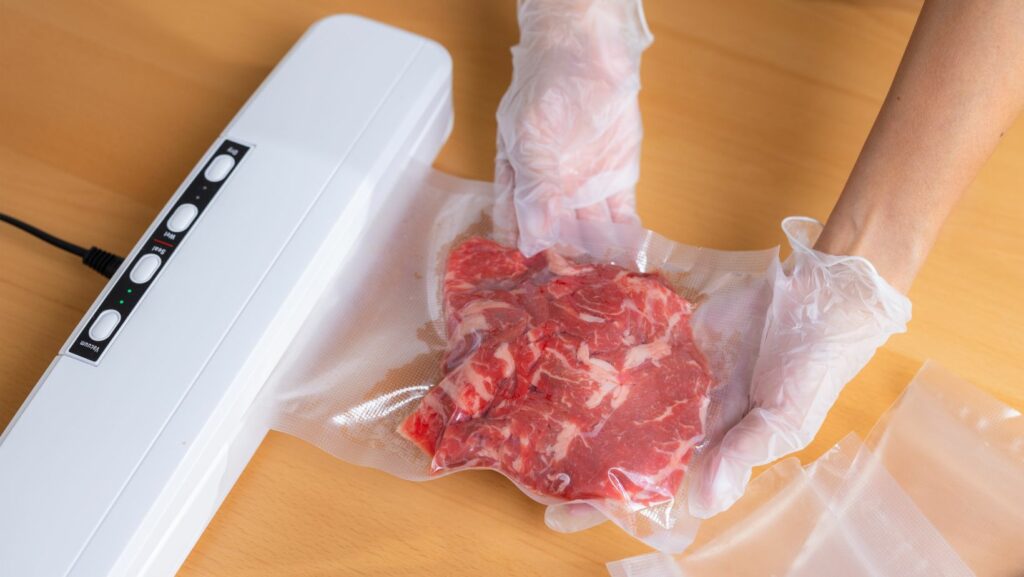When it comes to vacuum-packed meat, ensuring that it is cooked to the correct temperature is crucial for both safety and taste. But what is the best method of checking the temperature of vacuum-packed meat? In this article, I’ll explore different options and provide insights into determining the most effective approach.
One commonly used method for checking the temperature of vacuum-packed meat is using a digital meat thermometer. This handy tool allows you to take an accurate reading by inserting the probe into the thickest part of the meat. The digital display provides an instant readout, making it convenient and reliable.
Another option is utilizing sous vide cooking techniques. Sous vide involves vacuum-sealing food in plastic bags and then immersing them in a precisely controlled water bath. With this method, you can monitor and control the internal temperature of your vacuum-packed meat throughout the cooking process using sous vide immersion circulator or precision cooker.
Ultimately, choosing the best method for checking the temperature of vacuum-packed meat depends on personal preference and available resources. Whether it’s using a digital thermometer or employing sous vide techniques, ensuring that your meat reaches optimal temperatures will result in deliciously cooked meals while maintaining food safety standards.
Table of Contents
ToggleWhat Is the Best Method of Checking the Temperature of Vacuum-Packed Meat?
When it comes to checking the temperature of vacuum-packed meat, there are several methods that can be used. Each method has its pros and cons, so let’s explore some of the options:
- Thermometers: Using a thermometer is one of the most accurate ways to check the temperature of vacuum-packed meat. There are various types available, including digital thermometers and probe thermometers. Simply insert the thermometer into the thickest part of the meat without touching bone or fat for an accurate reading.
- Infrared Thermometers: Infrared thermometers offer a non-contact method of measuring temperature by detecting infrared energy emitted from an object. These devices can quickly give you a surface temperature reading on vacuum-sealed meats without needing direct contact.
- Temperature Strips: Temperature strips are adhesive strips that change color based on temperature. They are often found on the packaging or can be applied directly to the vacuum-sealed bag. While they provide a general indication of temperature, they may not always be as accurate as other methods.
- Cooking Time and Visual Inspection: Another way to determine if vacuum-packed meat is properly cooked is by following recommended cooking times and visually inspecting it for signs of doneness (such as browning). However, this method is less precise compared to using thermometers.
- Professional Equipment: Commercial kitchens and food safety professionals often use specialized equipment like data loggers or thermal imaging cameras to monitor temperatures accurately over time or in large-scale operations.

Thermometer Usage for Vacuum-Packed Meat
When it comes to checking the temperature of vacuum-packed meat, using a thermometer is the best and most accurate method. Here’s why:
- Safety First: Ensuring that vacuum-packed meat is cooked to the proper internal temperature is crucial for food safety. Using a thermometer allows you to accurately measure the temperature and make sure it reaches safe levels.
- Precision Control: Different cuts of meat require specific internal temperatures for optimal cooking. By using a thermometer, you can achieve precise control over the cooking process and avoid undercooking or overcooking your meat.
- Easy to Use: Thermometers are straightforward tools that anyone can use with minimal effort and training. Most thermometers come with clear instructions on how to use them correctly, making them accessible even for beginner cooks.
- Instant Readiness: With advancements in technology, many thermometers now offer instant-read features. This means you can get an accurate temperature reading within seconds, ensuring efficient monitoring without wasting time.
- Versatility: Thermometers can be used for various types of meat, not just vacuum-packed ones. Whether you’re grilling steaks, roasting chicken, or smoking ribs, a good quality thermometer will serve you well across different cooking methods.

